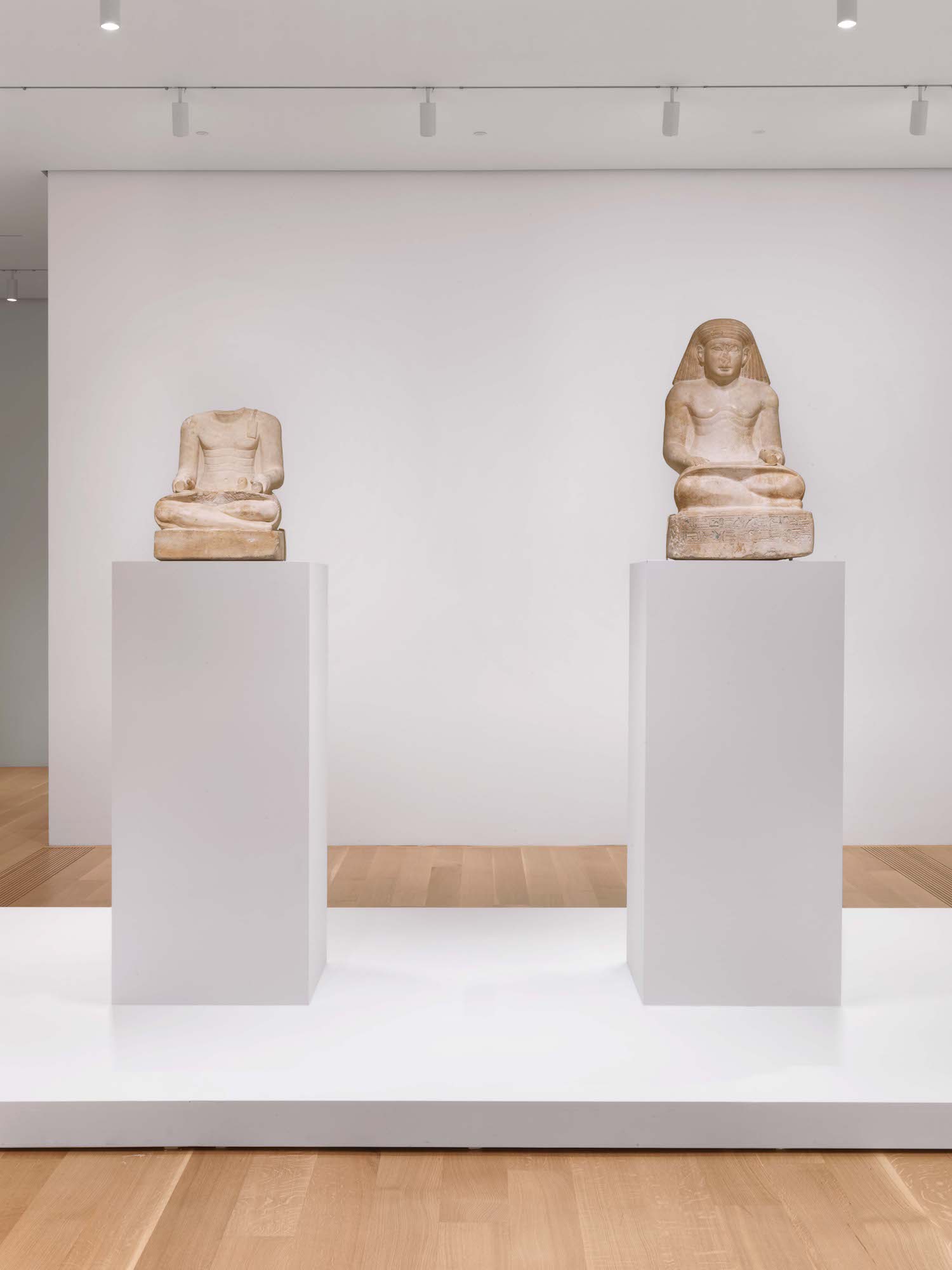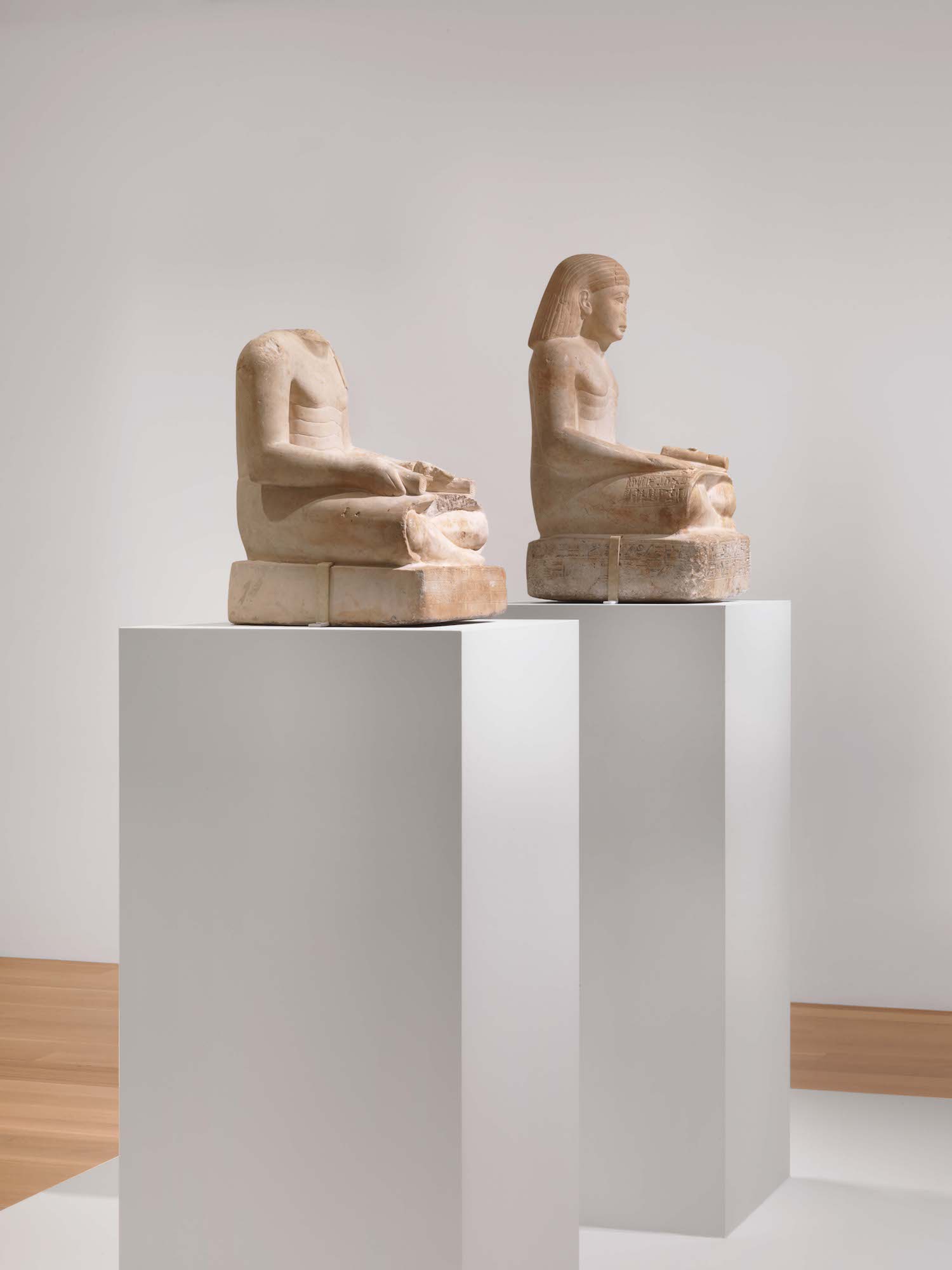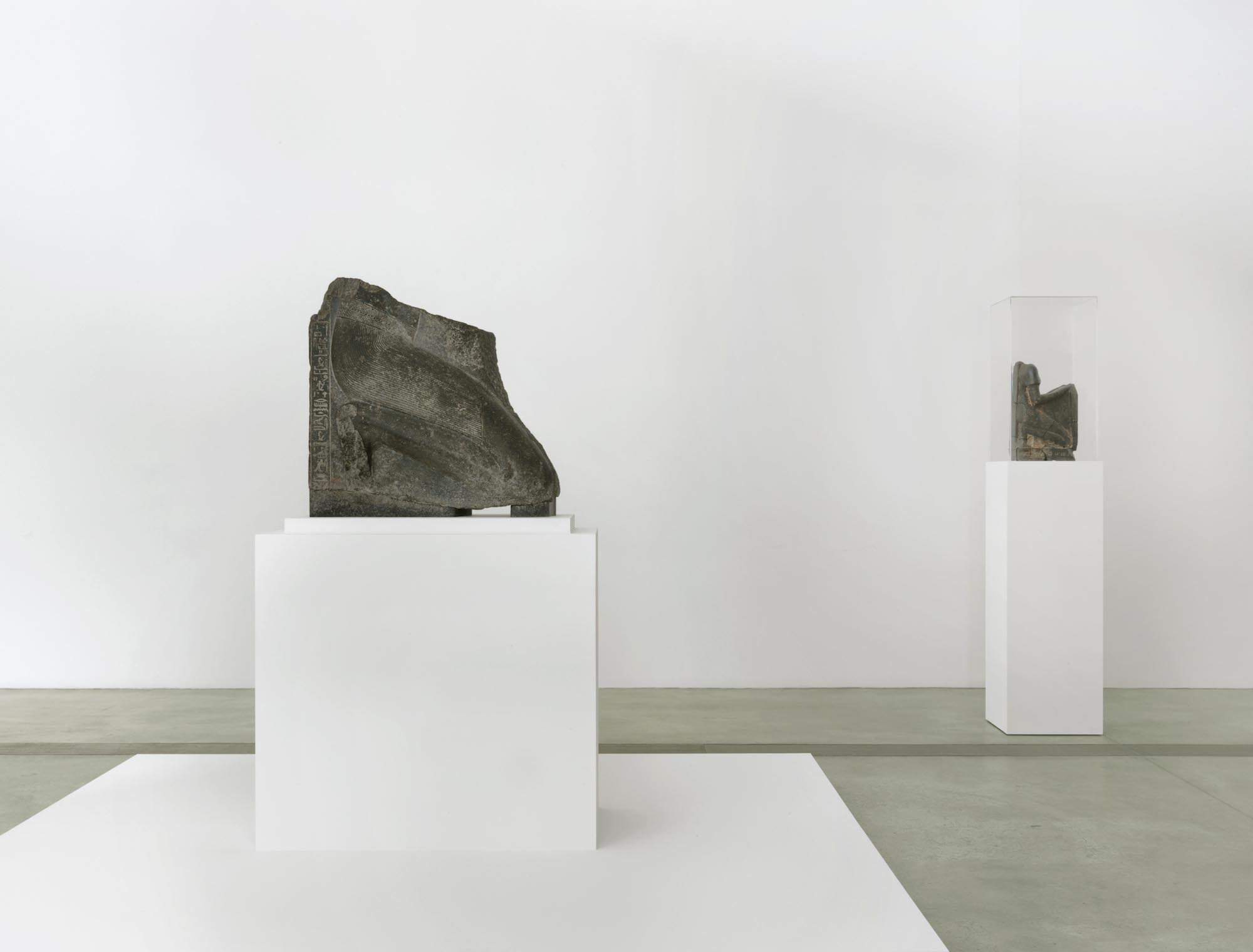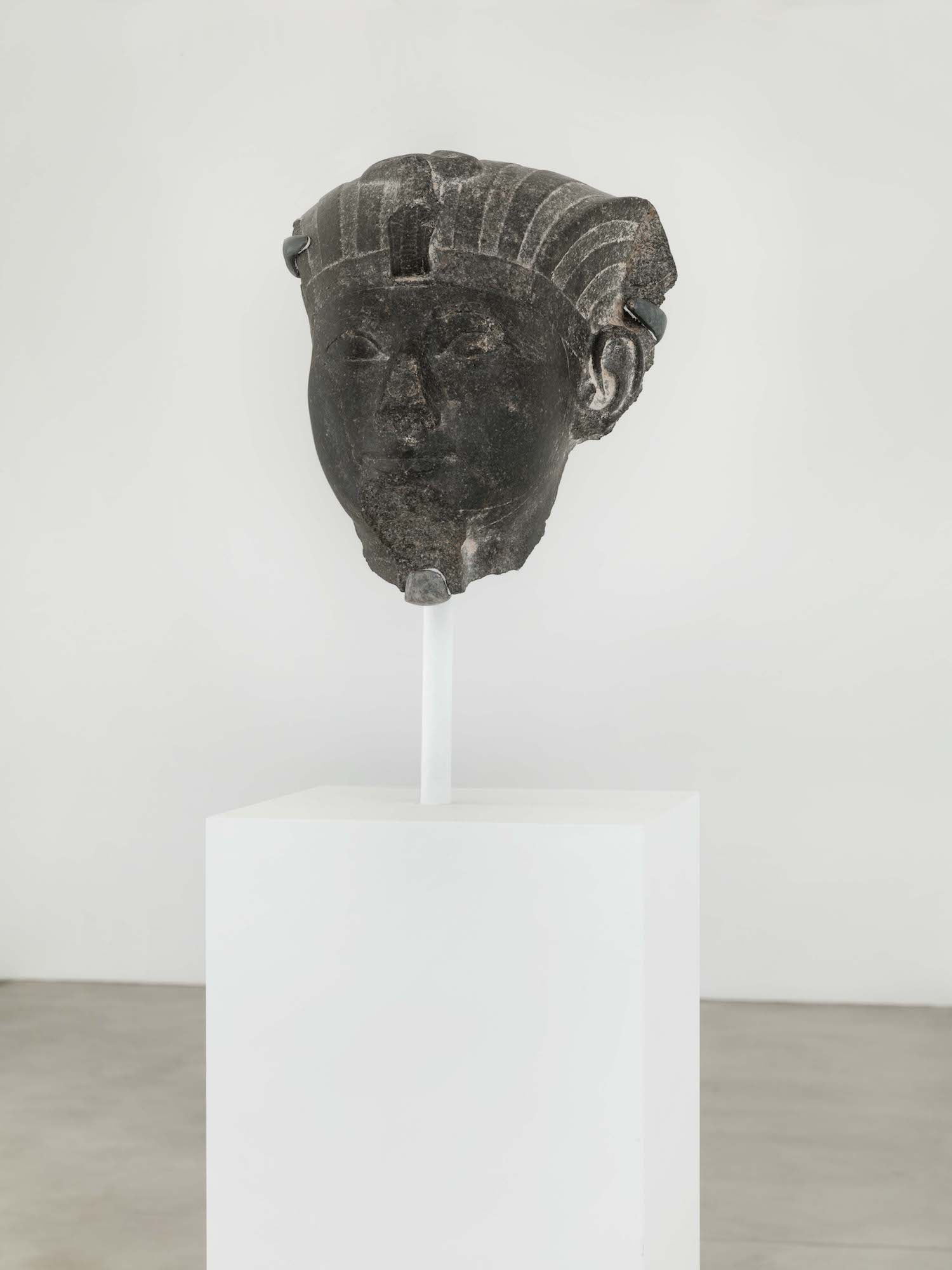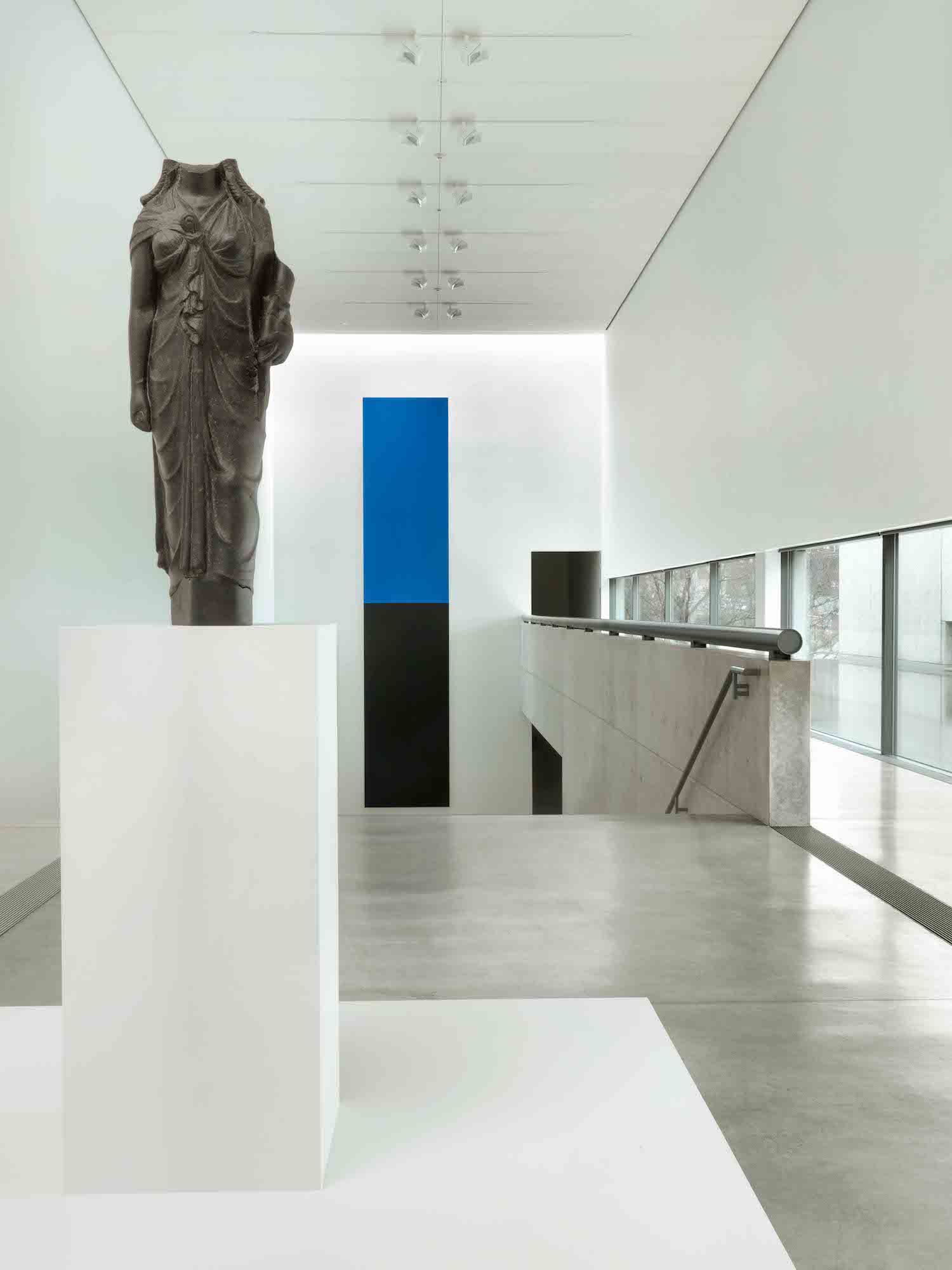Striking Power: Iconoclasm in Ancient Egypt
Installation view of “Striking Power: Iconoclasm in Ancient Egypt” [photo: Alise O’Brien; courtesy of the Pulitzer Arts Foundation, St. Louis]
Share:
Striking Power: Iconoclasm in Ancient Egypt defines the concept of iconoclasm as “the intentional damage to and destruction of culturally significant images and objects.” The exhibition presents nearly 40 damaged Egyptian statues and reliefs from the Brooklyn Museum’s permanent collection to explore and contextualize the intentional destruction of religious and political objects. Damaging an object suspends it between existence and nonexistence. It exists, but not wholly. The object is disconnected from its full power and is instead reduced or appropriated for the benefit of the destroyer. The exhibition interrogates the history of each object to uncover why it was damaged, by whom, and the particular ways in which it was damaged. The exhibition’s language and the objects themselves—dating from 25 BCE to 1 CE—place iconoclasm in the realm of the ancient. But iconoclasm, as a lens through which to view the repeated shifts of power, collapses them into a timeless visual conversation. The title of the exhibition insinuates that power is imbued in the images and objects we create, and that imbued power, embodied in these images and objects, is malleable.
Installation view of “Striking Power: Iconoclasm in Ancient Egypt” [photo: Alise O’Brien; courtesy of the Pulitzer Arts Foundation, St. Louis]
Installation view of “Striking Power: Iconoclasm in Ancient Egypt” [photo: Alise O’Brien; courtesy of the Pulitzer Arts Foundation, St. Louis]
The Pulitzer Arts Foundation created an opportunity for these ancient works to be viewed outside the encyclopedic museum. Free from the weight of representing an entire civilization, the statues and reliefs are presented as individual works in conversation with one another. They are activated—now functioning more wholly—as historical artifacts and works of art. These works, first created to adorn tombs and temples, were exhibited within the structure of Pulitzer architect Tadao Ando. Ando’s concrete and glass environment places the work in conversation with light, water, and air. Ancient African art is rarely displayed in this way, an exhibition style typically reserved for modern and contemporary artworks. The pacing of the works within the concrete structure is meditative, allowing space for the beauty of each object to inspire awe. The works vary in scale and measure of damage, but even the smallest or most defaced sculptures carry the monumental quality of immortality. In this way, the exhibition fortifies the work: acknowledging the purpose and power of each object, allowing each object to stand ready for contemporary interrogations.
Installation view of “Striking Power: Iconoclasm in Ancient Egypt” [photo: Alise O’Brien; courtesy of the Pulitzer Arts Foundation, St. Louis]
The statue of Crown Prince Khaemwaset from the Karnak Temple in Egypt is discernibly a human figure cleaved at the waist. He is identified by the shendjet (royal kilt) that he wears, but all that remains of the figure are his kneeling legs, which support an inscribed tablet. The inscription was not damaged in such a way that obscures his name, implying the possibility that the object was meant to be repurposed under a new regime. The severed body of the Prince Khaemwaset statue may unsettle viewers, but in close proximity, the crude damage robs the object of its sentient qualities. The body of the young prince was reduced to a block of the dark granodiorite he was carved from. Targeted damage left some objects more intact. The statue of the superintendent of the granary, Irukaptah, visibly shows damage only to the nose. Beyond the nose, the seated body and the inscribed block he rests on remain intact. The defacing of the nose is a form of spiritual warfare that is meant to rob Irukaptah of his ability to breathe in the afterlife.
Just as a visual and symbolic language was at play in the creation of these works, the exhibition reveals and defines a language of destruction for contemporary audiences. A belief that image and spirit were connected existed in Egypt, just as the physical body and spirit were connected. To damage the image of a person was to damage their safe passage to the afterlife and their existence there. Many figures’ hands were removed or damaged, as it was believed that without hands the spirit could not give or receive offerings in the afterlife. Such strategic attacks were meant to damage both the object and the spirit of the depicted individual, as well as anyone left to view the damaged object. The intent was not to destroy objects but, instead, for them to be seen in this weakened state as a message or warning that power had shifted. The same can be said for charring, burning, neglect, or the removal of the beard. In Egypt these acts could be read and understood as easily as written language.
“Hatshepsut,” installation view, ca. 14-78-1458 BCE [photo: Alise O’Brien; courtesy of the Pulitzer Arts Foundation, St. Louis]
“Isis,” installation view [photo: Alise O’Brien; courtesy of the Pulitzer Arts Foundation, St. Louis]
Although the exhibition does not make direct contemporary connections, it provides a historical foundation and discursive framework to approach the problem posed by currently contested public monuments and contemporary languages of destruction. ISIS has targeted and destroyed ancient sites with religious and cultural significance. Mosques, churches, libraries, architecture, artifacts, and art continue to be targeted. The destruction sends a clear message: not only are your physical bodies in danger, so is your cultural legacy. Such terror can be experienced within the borders of the United States. Shifts in the US political and social climate have led to the destruction of Muslim mosques, Jewish temples, and African American churches. Debates over how to contend with Confederate symbols and monuments still rage. The agendas of those who campaigned for these monuments’ erection and preservation are losing social favor as more diverse voices contribute to public discourse. In the battle for control of the public visual landscape, protestors have taken to destroying these monuments with the force of a hammer or the acidity of piss.
Striking Power: Iconoclasm in Ancient Egypt at the Pulitzer Arts Foundation in St. Louis was organized in collaboration with the Brooklyn Museum and was curated by Edward Bleiberg, senior curator of Egyptian, Classical, and Ancient Near Eastern Art at the Brooklyn Museum, and Stephanie Weissberg, associate curator at the Pulitzer Arts Foundation.
TK Smith is a writer, researcher, and aspiring curator of American art. Currently, he is a Tina Dunkley Curatorial Fellow in American Art with the Clark Atlanta University Art Museum. His interests lie in the intersections of art, material, and race.
